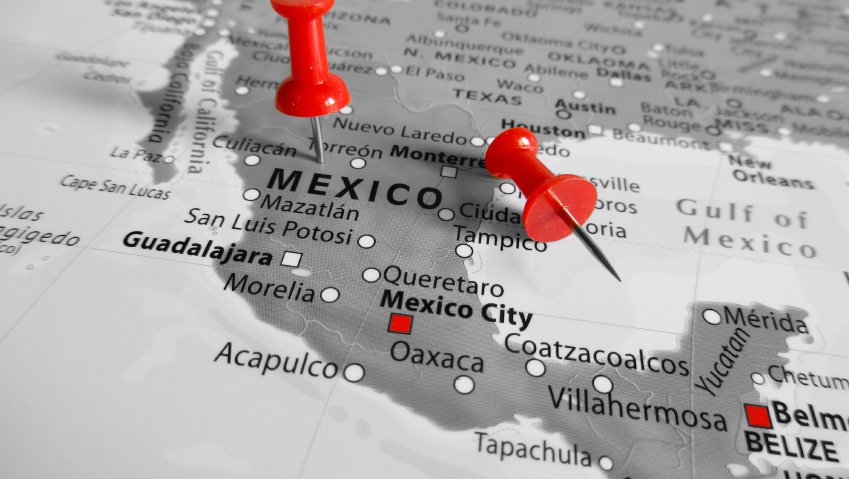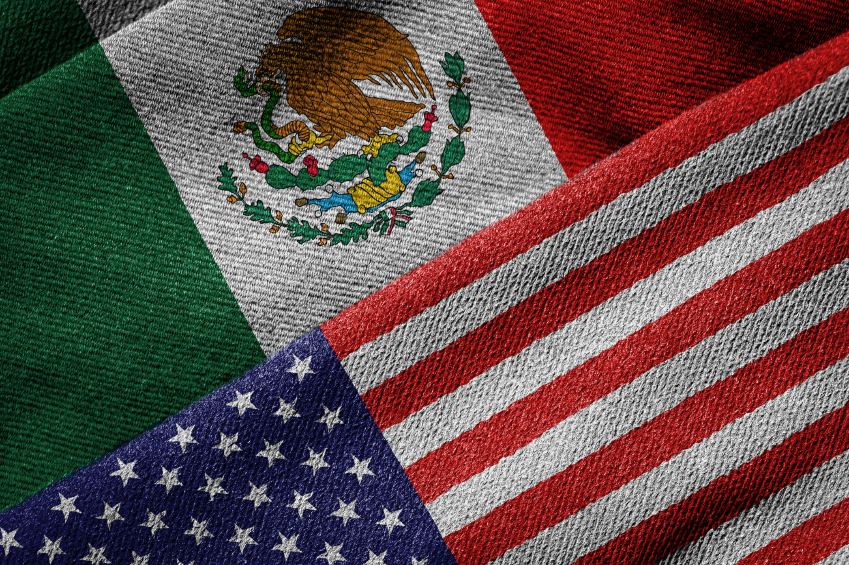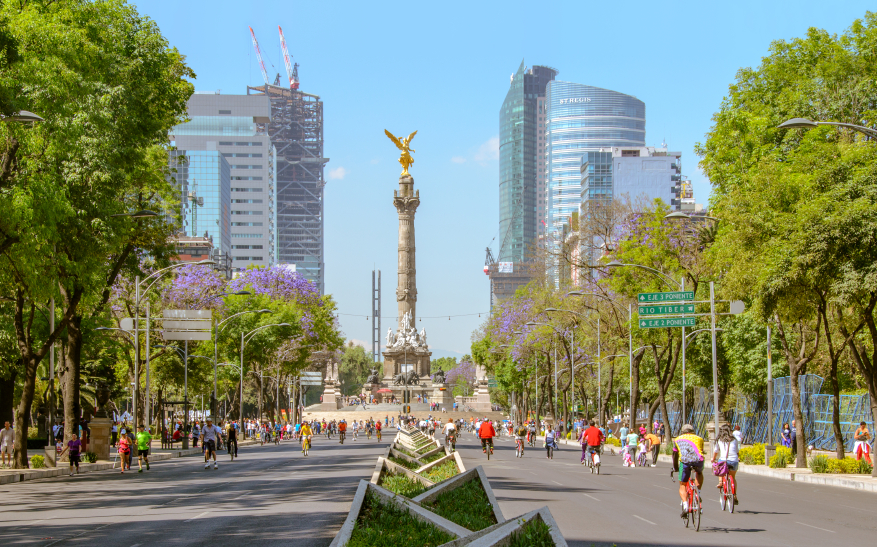Mexico’s growing middle class, strengthening economy, and consumer desire for upscale products and experiences, make for a strong opportunity for luxury brands.

Mexico’s growing middle class, strengthening economy, and consumer desire for upscale products and experiences, make for a strong opportunity for luxury brands.
Euromonitor explores the forces at play and investigates if Mexico really is the next luxury goldmine.
Our latest data reveal that 2015 was yet another challenging year for the luxury goods industry. In particular, the economic instability, social unrest and armed conflict buffeting formerly fast-growing emerging markets have driven up the strategic importance of the developed markets, not to mention the turmoil on the global foreign-exchange markets since late 2014 creating a global currency war for the industry as well as the
Emerging markets continued to face divergent fortunes with large luxury goods economies such as Russia and Brazil in crisis but others such as Mexico in a stronger position. At the same time connectivity continues to drive new opportunities in digital innovation, with the internet and social media reaching new frontiers.
“ But whilst 2016 will not be a stellar year for the global industry overall, we will see some tailwinds, with markets such as Mexico in much stronger positions ”
The outlook for 2016 looks set to continue to recover only slowly, with headline growth remaining disappointing.
The China slowdown will continue to exert a negative impact on the industry through flow-on effects on trade, but also because of its impact on consumer confidence and well as a slowdown on wealthy tourist flows into other key luxury goods markets. Similarly the impact on Hong Kong’s slow down shows no signs of abating in the short term.
Weak commodity prices will continue to weigh on commodity exporters, whilst benefitting net importers. Similarity the impact on the Swiss luxury watch industry and the floating Swiss franc continues to act as a drag on sales and exports.
But whilst 2016 will not be a stellar year for the global industry overall, we will see some tailwinds, with markets such as Mexico in much stronger positions. Indeed, India is fast becoming one of the world’s major economic growth engines, with a rapidly growing population that is eager to spend and as we can see in the chart is clearly bucking the BRIC trend.
“ The real value of private final consumption rose by 3.9% in 2015 and gains of 3.3% are forecast for 2016 ”
Mexican economy shows strong signs of rebound
The Mexican economy is showing strong signs of rebound, thanks to strong economic recovery in the USA and robust private consumption. There is also optimism, due to reforms carried out by the government, particularly in terms of improved fiscal position and higher energy and telecommunications investments.
Real GDP is expected to grow by 2.6% in 2016, up from 2.4% in 2015. Manufacturing and services are the main drivers of growth. Exports will also see a modest rebound. A fall in domestic oil production dampens investor interest. The economy grew by 0.6% in the fourth quarter of 2015 compared with the third quarter.
Prices rose by 2.7% in 2015 and inflation of 3.2% is expected in 2016. The central bank’s ceiling for acceptable price increases is 4.0%. Interest rates were hiked in December 2015.
The real value of private final consumption rose by 3.9% in 2015 and gains of 3.3% are forecast for 2016. Steady wage growth and lower rates of unemployment support consumption. Remittances, a major source of funding for consumption, grew by just 2.0% in 2015. According to the national statistics office, the middle class makes up 39% of the population and the share should rise as a result of recent reforms.

Mexico has generally favourable policies towards foreign direct investment (FDI), providing for free flows of profits, royalties and capital. Important reforms approved by the government since 2013 have opened up the petroleum sector to private sector participation; allowed for competition in electric power generation; and raised the cap for foreign ownership in telecom and broadcast sectors to 100% and 49.0% respectively.
Similarly the last two years has seen Mexico continue the trend of pro-business regulatory reforms which started in the 2000s. This was most evident in the category ‘Resolving insolvency’, where Mexico gained four places to rank 27th at a global level in Doing Business 2015 (the largest variation across any category of doing business in that year). This was on the back of reforms that clarified rules related to insolvency proceedings; shortened the time extensions allowed during reorganisation; facilitated the electronic submission of documents; and improved the legal rights of parties involved in bankruptcy procedures.
Mexico is in a unique position among emerging markets because of its shared border with the USA and membership of NAFTA. Its performance is strong in the context of the region as a whole which is struggling with projected growth of just 0.1% in 2015 versus 2.4% for Mexico in the same year. The Trans-Pacific Partnership (TPP) will enhance the country’s position as a trade centre for Latin America. It will encourage Asian investment in Mexico. Total FDI inflows accounted for just 1.8% of GDP in 2014.
Strengthening the rule of law in Mexico is key to the development of the economy and with it the luxury goods industry. Mexico ranked 124th out of 202 countries in the World Bank’s Rule of Law Index in 2014.
“ Mexico’s luxury goods market looks to have one of the most promising growth potentials in the next five years ”
Mexico City among the top 10 most populous in the world
Mexico City is the largest metropolis in the Latin American region and among the top 10 most populous in the world. Over 2009-2014 the population of the Mexico City metropolitan area increased by 5.6% and reached 21 million by the latter year. Population expansion was more rapid across the remaining parts of the country, namely 7.7%, whilst the average growth across the leading Latin American cities came to 6.3% over 2009-2014.
In terms of luxury goods sales, Mexico was the world’s seventh fastest growing market in 2015 and the fastest across the Latin American region. Moving forward Mexico’s luxury goods market looks to have one of the most promising growth potentials in the next five years. However, there are still major challenges to overcome – its business environment is plagued by high levels of corruption; drug-related crimes; and violence, all of which are issues that are likely to persist in the medium to long term and do not bode well for the luxury goods landscape.
And although China is close to 8,000 miles away from Mexico, Mexican officials are however concerned about the Chinese renminbi’s fall against the US dollar. In response, the peso has also fallen to a historic low against the dollar, raising the prospect of a currency war as both countries seek to gain market share in the US market. In turn this could have a negative impact on luxury sales.
Indeed. Mexico has a difficult course to navigate in the coming year, interest rate rises in the USA, increased emerging market volatility and the China slowdown could create stresses in the Mexican economy. Luxury goods marketers to need to be aware of this
“ In 2016, there will be over 8.3 million middle class households in Mexico, up by 20% since 2010 ”
Mexico’s middle class continues to grow in sophistication
Latin America is a key emerging region for the luxury goods industry, responsible for 4.5% of total global consumer expenditure in 2015, up from 3% in 2005 over a quarter on this spend come from Mexico alone.
The middle class in Mexico continues to expand and grow in sophistication, even as the headlines are dominated by news and analysis on emerging markets overall recording their slowest rates of growth since the global financial crisis. In 2016, there will be over 8.3 million middle class households in Mexico, up by 20% since 2010.
Similarly there will be over 210 thousand households in Mexico with an annual disposable income over US$300,000 up 6% on 2015 numbers and 15% since 2010. During the same period (2010-2016) the number of households in Brazil fell by -12.5%. On the back of this luxury goods are set to be the fastest-growing consumer spending category in 2016, as total consumer spending on this category in Mexico is forecast to rise by just under 6% year-on-year in real terms.
The Mexican middle class has seen significant growth in the past 15 years. In fact it is both the fastest-growing and the largest single segment in Mexico. As such, in 2015 it totalled 14.6 million households – 47% of the total households in the country.
Looking ahead, the middle class is set to continue to grow, with a further 3.8 million households expected to join its ranks by 2030. In this year it will total more than 18 million – a huge number, equivalent to all the households in Spain. Understanding this consumer segment and their needs will help to further drive luxury spending
Maximizing the growing influence of the middle class in Mexico both as a consumer force, but also as a driver of luxury goods growth and stability, is crucial in fostering the country’s potential.
“ Mexico offers one of the brightest telecom landscapes in Latin America, with its large, youthful and expanding population hungry for web-based luxury products ”
Mexico’s surging market growth in mobile-based segments to impact digital landscape
In terms of the digital consumer, Mexico offers one of the brightest telecom landscapes in Latin America, with its large, youthful and expanding population hungry for web-based luxury products. This is demonstrated by surging market growth in mobile-based segments and the largest telecom investment levels in the region.
Between 2011 and 2015 internet retail value sales increased by 232% (in real terms) while mobile internet retail sales increased by 1,124%. Growth has been driven in large part by the large segment of tech-savvy young consumers with mobile devices who are comfortable buying products online.
Lagging digital penetration rates provide opportunities for luxury m-commerce in an under-saturated market. Total retail value of the Mexican m-commerce market stood at US$1.6 billion in 2014, a massive growth of over 3,000% in real terms over 2009. The market is expected to grow to US$5.5 billion by 2019, a 148% expansion in real terms over 2015. This will offer up new platforms for luxury brands to engage with many new would-be luxury consumers – especially in the more affordable luxury area.
“ The role of these new luxury department stores are becoming more important as far as delivering added benefits to the luxury consumer ”
New luxury shopping centres revitalizing urban areas
2015 also witnessed a flurry of new shopping centres opening up in the Polanco neighbourhood of Mexico City. The centres embody the on-going trend in Latin America of using shopping centres as means of revitalizing urban areas. Antara Fashion Mall was built on an old General Motors car lot while Toreo Parque Central was built where the bull ring, Toreo de Cuatro Caminos once was. But the most notable for luxury retail has been the new El Palacio de Los Palacios – which was formerly a Palacio de Hierro department store.
This flagship store is three times as big as the typical Palacio de Hierro department stores and is a key destination for luxury brands with one floor dedicated purely to leading luxury retailers.
Much like other leading luxury department stores across the world, the emphasis at El Palacio de Los Palacios is on the experiences for its luxury clientele. There’s a florist, a high end watch repair shop, a VIP room for jewellery shopping, concierge services, VIP personal shopping, among other amenities. There’s also a barbershop, beauty salon and an area for high tea as well as boasting a huge outdoor terrace which act as an additional draw with great views of the city.
The role of these new luxury department stores are becoming more important as far as delivering added benefits to the luxury consumer.
Consumers are reassessing their values and priorities and are more focused on getting the most out of life with a clear desire for authenticity and wellbeing and well as wanting to live freer and simpler lives. Similarly luxury consumers overall are increasingly looking for an “experience” in their purchases – a trend that is even more propounds with the millennial population.

Consumer lending influences luxury goods consumption
Growth of consumer lending has been an important factor influencing luxury goods consumption patterns in the country.
Total consumer expenditure in Mexico reached US$777 billion at the end of 2015, after increasing at an average annual rate of just over 3% in real terms between 2010 and 2015 (equivalent to a total real rise of 18% during that period). Growth of the country’s total consumer expenditure along with luxury goods spending was backed by rising levels of per household disposable income, combined with an increase in total consumer lending (including mortgages), which expanded by 33% in real terms between 2010 and 2015 to reach MXN3.1 trillion (US$206 billion) in 2015.
Over the period of 2015-2030, Mexico’s total consumer expenditure is forecast to grow on average by 3.6% per year in real terms, supported by the continued expansion of per household disposable income levels and consumer lending during that period – this will have a strong impact on purchasing habits across the region.
To further investigate luxury markets on Luxury Society, we invite you to explore related articles:
– USA: Still The Land Of Luxury Opportunity?
– Emerging Luxury Markets: Is India The Best Of BRICS?
– Asian Luxury Markets: Where Is The New Focus?
– Switzerland: Land Of Luxury Or Sinking Ship?










